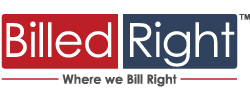AR Performance KPIs Every Practice Should Be Tracking
Importance of Tracking AR Efficiency
Tracking accounts receivable (AR) efficiency is critical for any healthcare organization. It provides insights into how well you manage your revenue cycle and helps identify areas for improvement. Understanding this efficiency can directly impact the financial health of your organization.
Enhancing Revenue Cycle Management
The effective management of AR is vital in enhancing your revenue cycle. By closely monitoring AR efficiency, you can streamline processes, reduce outstanding receivables, and improve cash flow. Implementing specific Key Performance Indicators (KPIs) allows you to assess your performance accurately and make informed decisions.
A strong AR process can directly influence various aspects of your organization, such as patient satisfaction and operational efficiency. By focusing on enhancing AR efficiency, you can ensure timely reimbursements, thereby boosting overall financial viability.
Benefits of Utilizing KPIs for AR Efficiency
Utilizing KPIs for measuring AR efficiency offers numerous benefits. Here are some key advantages:
| Benefit | Description |
|---|---|
| Informed Decision-Making | KPIs provide a clear picture of your AR performance. This data enables you to make informed decisions based on facts rather than assumptions. |
| Identifying Trends | By regularly assessing KPIs, you can identify trends over time. This helps you to anticipate challenges and adjust processes proactively. |
| Benchmarking Performance | KPIs allow you to benchmark your performance against industry standards. This comparison can guide your efforts toward aligning with best practices. |
| Enhancing Efficiency | By focusing on AR efficiency, you can streamline processes to improve overall operational efficiency. This can lead to reduced costs in the long run. |
| Targeted Improvements | KPIs enable you to pinpoint specific areas needing improvement. Whether it’s denials management or patient collections, focused efforts can yield significant results. |
In summary, tracking AR efficiency through KPIs is essential for optimizing revenue cycle management in healthcare settings. You can enhance financial performance, manage risks, and achieve your organization’s objectives by utilizing these metrics effectively.
Key Performance Indicators for Measuring AR Efficiency
Measuring accounts receivable (AR) efficiency is vital for optimizing financial management in healthcare. Utilizing effective key performance indicators (KPIs) can help you gain insights into your revenue cycle and take action for improvement. Here are several essential KPIs to monitor:
Days Sales Outstanding (DSO)
Days Sales Outstanding reflects the average number of days it takes to collect payments after a service has been provided. A lower DSO indicates better cash flow management.
| Period | DSO |
|---|---|
| January | 45 |
| February | 42 |
| March | 40 |
To improve your DSO, you may consider streamlining your billing processes or implementing better follow-up procedures with patients.
Denial Rate
The Denial Rate measures the percentage of claims that are denied by payers. A high denial rate can indicate issues with billing practices or documentation.
| Month | Denial Rate (%) |
|---|---|
| January | 10 |
| February | 12 |
| March | 8 |
Reducing the denial rate is essential for maintaining revenue. You can start by analyzing the causes of denials and taking steps to resolve them.
Collection Effectiveness Index (CEI)
The Collection Effectiveness Index assesses the effectiveness of your collection efforts by measuring the amount of money collected against what was deemed collectible.
| Quarter | CEI (%) |
|---|---|
| Q1 | 85 |
| Q2 | 80 |
| Q3 | 90 |
A higher CEI indicates that you are efficiently collecting the revenues that are due. Strategies to improve your CEI include enhancing communication with payers and patients.
Clean Claim Rate
The Clean Claim Rate measures the percentage of claims that are submitted without errors on the first attempt. High clean claim rates can lead to faster payments and reduced workload for staff.
| Month | Clean Claim Rate (%) |
|---|---|
| January | 92 |
| February | 90 |
| March | 95 |
Improving this rate may involve staff training and proper documentation practices.
Aging Report Analysis
An Aging Report provides insights into outstanding receivables and categorizes them based on how long they have been unpaid. Reviewing aging reports allows you to prioritize collections effectively.
Regular analysis can help in identifying trends and making informed decisions regarding collections.
By focusing on these KPIs, you can enhance your AR efficiency and overall financial management in healthcare.






